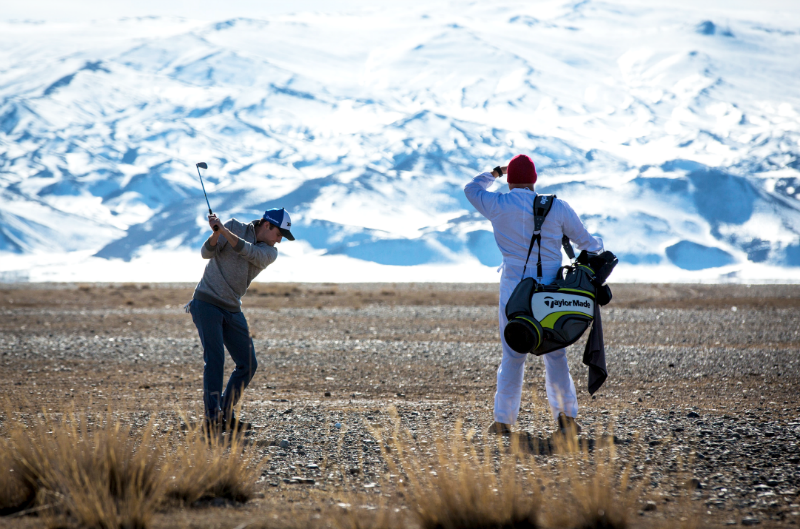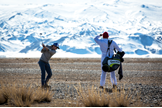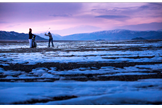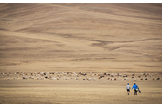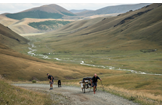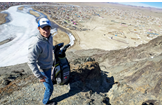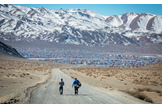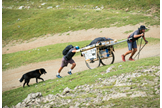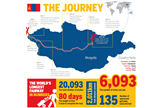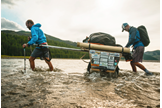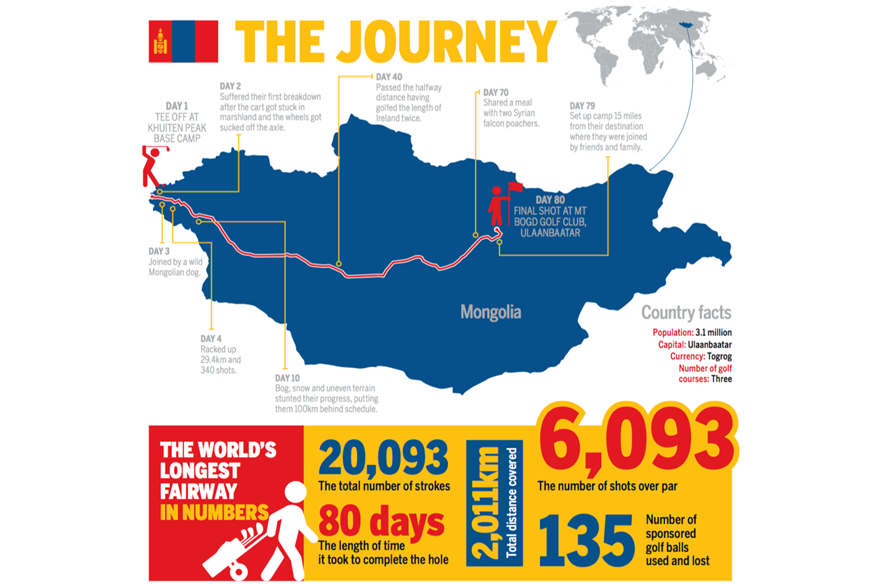The longest hole: A 1,250 mile challenge across Mongolia
Last updated:
80 days and 20,093 shots: The incredible story of one golfer, his caddie and a 1,250-mile playing challenge across Mongolia
Adam Rolston’s journey had taken him across frozen rivers, up and over glaciers and into the 40-degree heat of the Gobi Desert. Along the way, he had lost 135 golf balls, ridden a camel and inadvertently adopted a dog. Everything had been leading to this moment: A seven-foot putt on the 18th green at Mt Bogd Golf Club in Mongolia.
Watched by 200 spectators, including his friends and family who had flown over from Hong Kong, Rolston sent his bruised and battered ball crashing into the hole to enter the Guinness World Record books.
It had taken him 80 days and 20,093 shots – just the 6,093 over par – to complete the longest hole in golf. Accompanied by his ‘caddie’ and old rugby friend Ron Rutland, Rolston had achieved what many thought was impossible.
“I had doubters,” admits the former Hong Kong rugby international. “But then it’s always good to prove people wrong. It was physically the hardest thing I’ve ever done. I had never walked that far in my life.
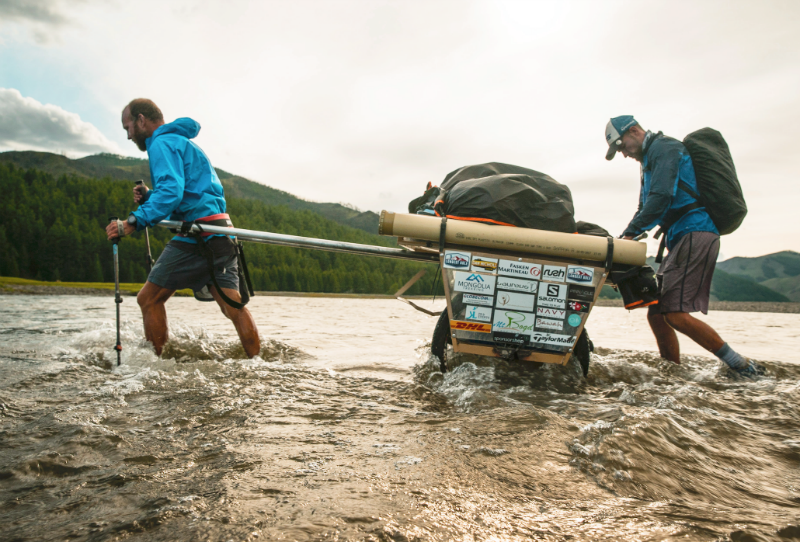
“It was extremely hard, but so satisfying at the end, especially when I managed to two putt from 50 feet. I hadn’t putted in 12 weeks and I swear every single seven-foot downhill putt that I’ve had in my life I’ve missed. I’m never going to experience winning the British Masters like Paul Dunne did, but it felt like I had created a winning moment for myself.”
For Rutland, the feeling of ecstasy and relief was one he had experienced before after spending 27 months cycling 26,700 miles.
“I left Cape Town in June 2013 and cycled to the 2015 Rugby World Cup in the UK via every country in Africa and most countries in Europe,” he says. “That was the first big adventure of my life and Adam had obviously heard about what I’d done. When we reconnected in Kenya last August, that’s when he told me he wanted to do a golf adventure.”
“I’ve always looked at adventurers and thought, I could do something like that,” explains Rolston, who plays off scratch. “I had spent three-and-a-half years playing professional rugby and didn’t achieve what I wanted to achieve. I took up golf when I was 16 and never got the chance to play professionally. So, I think the grit and determination I showed playing rugby and the potential skill I showed playing golf made me think that an expedition was built for me.”
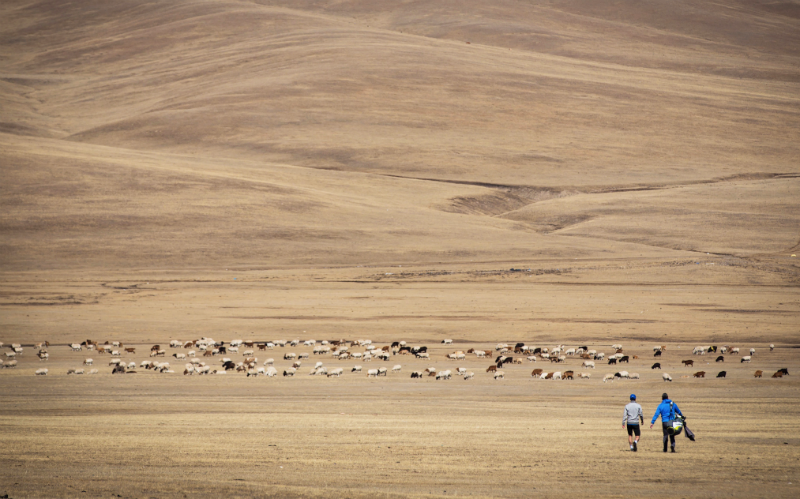
What started out as an idea over coffee quickly turned into a reality, and within eight months Rolston and Rutland were on a recce in Mongolia, where they spent seven hours with a tour company micro-plotting their route and where their food and equipment drops were going to be.
Upon their return home, Rutland ordered 150 packets of dehydrated camp food from Amazon so he could stick to his vegan diet. Not that Rolston was too pleased once he found out they were all the same flavour. “That’s because they were all on special [offer],” laughs Rutland.
Equipped with clubs and 400 golf balls from TaylorMade, they arrived at the base of Khüiten Peak, the highest and most westerly point of Mongolia, at 1pm on June 29 ready to tee off in aid of the Laureus Sport for Good Foundation and the South African Golf Development Board.
“The European Tour gave us an official endorsement and recognised our challenge as an official golf hole,” explains Rutland. “That was important in terms of our Guinness World Record application. They also provided us with a yardage board and tee markers, but it was only when we stood on the mountain ready to tee off that it really dawned on us the absurdity of what we were attempting.”
Getting there was no easy task either, and involved hitching a lift in a jeep before packing their equipment – golf cart included – on top of a camel.
“After that, four horses took us to the top of the mountain,” says Rolston. “That alone was five hours of plodding along. When we finally arrived, there was a glacier to our right and a river valley about 60ft below us.
“I hit a tee shot and it just disappeared. Luckily I hit a provisional ball because we lost the first. I lost five balls that day. We came to the conclusion that Ron would have to walk ahead and I would aim at him so we could see the ball land.”
The enormity of the challenge facing them was made clearer when they spent the first four days negotiating the White River Valley.
“It was probably the worst golf conditions we faced because of the grass length, rocks and how extreme the descent was,” says Rutland. “We originally wanted to walk 2,000km in 80 days, which works out at 25km a day.”
“But instead of walking 5km an hour, we were probably doing half that. I was towing a cart which weighed between 100 and 150 kilos. It was sleeting and snowing, and I had to wade through swamps which were knee-deep. The conditions were super-tough.”
By the end of the first week, they had already repaired their golf cart twice – once when the wheels came off, the second when the tyre came off the rim.
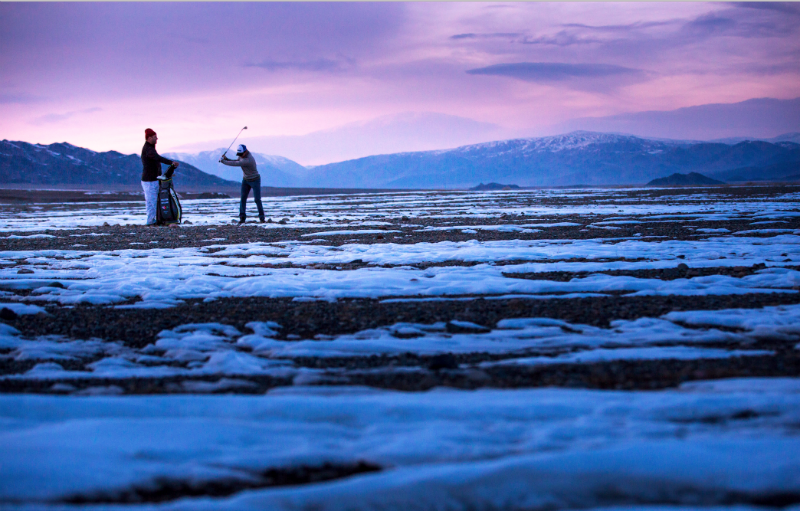
“That was super nerve racking,” admits Rutland, “because if the cart wasn’t fit for purpose, Plan B was pretty drastic. We started thinking about hiring a camel or buying an old Russian jeep. We were considering all scenarios, but fortunately the conditions did improve.”
The repair jobs and the “endless searching for golf balls” meant that they were well behind schedule, and faced the possibility of their visas expiring before the expedition was complete. “The reason we chose Mongolia as the longest hole is because it has very little infrastructure,” says Rolston.
“There are no fences or walls and it almost looks like a fairway. But we didn’t just pull the cart across flat land. We must have crossed over 100 rivers and there were times when I was hitting golf balls while Ron had stabilised himself on a mountain with walking poles. Once I played a shot, I was helping Ron to push the cart up the hill inch by inch. We were doing that an hour at a time, creeping up these hills. It was pretty brutal.”
Their mood wasn’t helped by an unwanted companion tagging along, and staying with them for the duration of the journey.
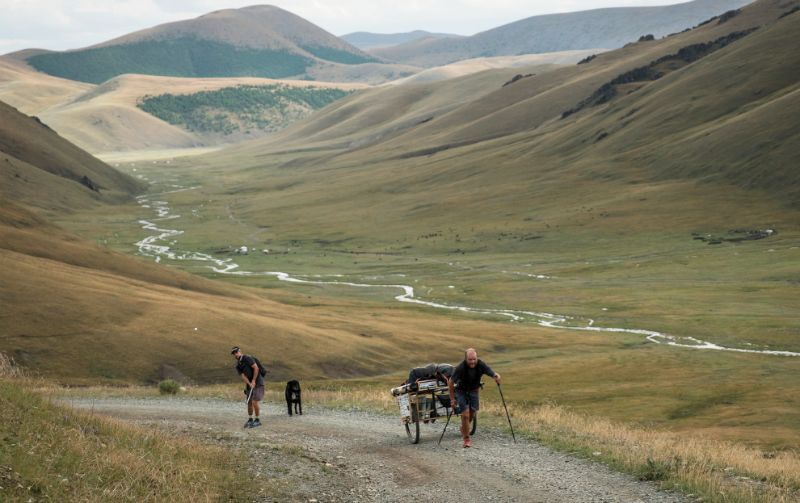
“After three days, a stray dog joined us,” explains Rutland. “That initially caused a bit of tension. Before we started, we had counted the number of socks so we could keep the weight down and then all of a sudden we were carrying 10 extra litres of water and a bit of food for the dog.”
“It wasn’t ideal,” adds Rolston, “but the dog provided so much more than what we were giving him. He became part of the gang; we called him UB. He actually ended up becoming a bit of a celebrity in Mongolia, and there was a Facebook campaign to find him a home. We ended up finding him a home with a couple in the Terelj National Park, which was quite an emotional moment.”
Beyond caring for the dog and adapting to the conditions, one of the biggest challenges was dealing with injuries. Rutland, a former banker from South Africa, was left nursing an inflamed hip and a swollen ankle, while Rolston started suffering back and neck spasms with two weeks to go.
“I basically had to sleep upright against all my baggage,” says Rolston, who hails from Northern Ireland. “I was in so much pain and trying to hit 300 balls every day slowed the recovery. In the end, I was flicking shots about 60 yards.”
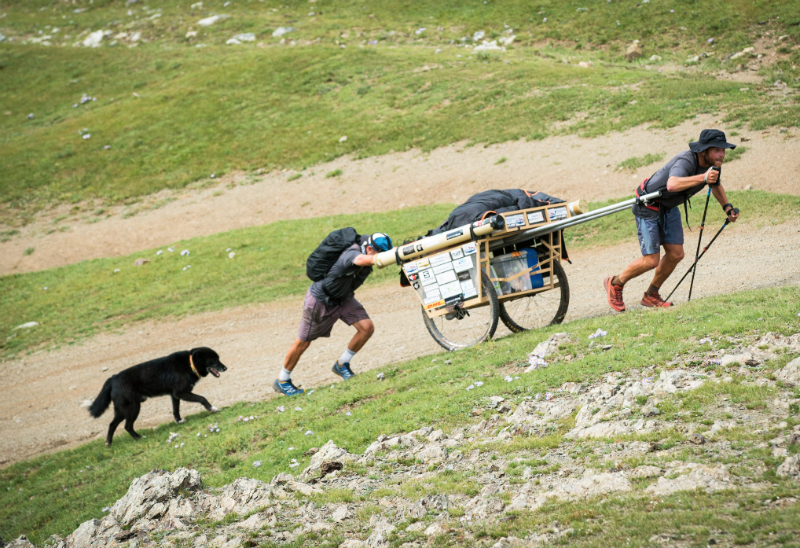
The dangers of the journey were laid bare once they reached the Gobi Desert, which Rutland describes as “the most inhospitable environment you can imagine”. “We had to plan for not seeing a human being for four or five days, so we were carrying up to 60 litres of water,” he says.
“Though we had a cameraman who joined us for two or three sections for our documentary, it was just the two of us (and the dog) for the majority of the time. It did feel like we had the whole world to ourselves, but I was surprised how connected we were. We didn’t go longer than four days without any cellphone connection.”
As a result, Rutland was able to send pictures of his swollen ankle to his doctor in Hong Kong for advice while Rolston updated their story on social media. They had plenty of time to do so, as it was too hot to even consider playing golf after 9am with temperatures spiking to 40 degrees in the desert.
“We were waking up at 3.30am, just when it was light enough to hit a ball 100 yards into the distance,” recalls Rolston. “We’d play until 9am, lie under tarpaulin on our camping mattresses for between six or eight hours and then get up and play until dark.”
Once they re-entered civilisation, they would often leave the dog to guard the tent from wolves and walk to nearby villages, where they drank Russian vodka with locals and taught them how to play golf.
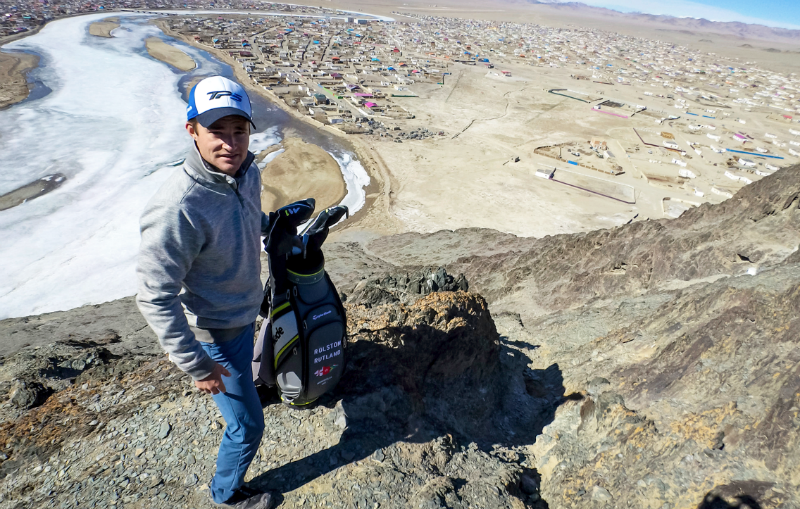
“That’s probably the one thing we’ve taken from the journey; how sport transcends language and brings people together,” says Rolston. “We took golf out of its normal environment and took it to a place that has never seen it before. They all gave it a crack and were pretty good at it.”
In return for the lessons, Rolston and Rutland were invited into their “gers” (nomadic tents) and presented with meals. “We had a magic letter which explained who we were and what we were doing,” explains Rutland.
“We used Google translator to translate it into Mongolian and Kazakh – the two main languages. But it almost became embarrassing trying to explain to them that I didn’t eat meat or dairy. The whole concept of being a vegetarian was unheard of in their culture. So, I ended up losing 13 or 14 kilos while Adam took one for the team and drank the fermented horse’s milk.”
Not content with living off two-minute noodles and local delicacies, Rolston tried to source his own food by fishing in the surrounding rivers.
“He was so adamant he was going to catch a fish,” laughs Rutland. “He tried every bit of water and the one day when he caught three fish… well, the joy on his face was incredible. You would have thought he’d won the lottery.”
“I didn’t even have a proper rod,” adds Rolston. “It was like a pole with fishing wire tied to the end. Honestly, it probably ranks in the top five moments of my life.”
As they neared the finish line on the 18th green at Mt Bogd Golf Club in Ulaanbaatar, they were joined by friends and family for the final 15 miles and played the last 500 metres dressed in traditional Mongolian robes.
“We started out as golfers and finished as Mongolians – that was a nice way to end it I thought,” says Rolston.
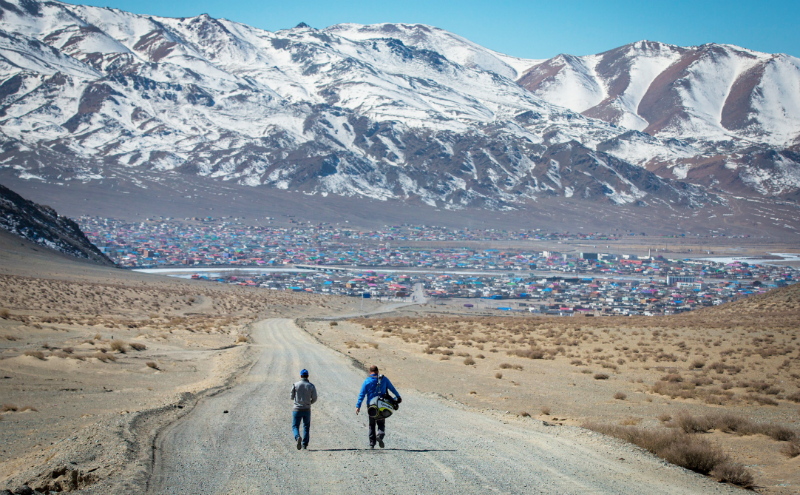
“I ended up taking just over 20,000 shots and we raised $20,000, so it worked out at around a dollar a shot. We set the par at 14,000 and based it on me hitting full 8-irons across the country, which was a bit stupid. We didn’t really factor in the ball finding a muddy lie or a rocky crevice, so I was 6,093 shots over par!”
“But apart from that, there’s nothing I regret from the trip at all. There were times when we were naive in what we were trying to accomplish at the beginning, but we knuckled down and got it done.”
“When we started, I don’t think people believed in our dream,” suspects Rutland. “There were times when we thought where the hell is the fun in this. It was the hardest thing I’ve done in my life.”
“I’m still a bit of a wreck even now. But we are both stubborn people and, barring a broken leg, Adam and I made up our mind that we were going to do it. The last time we’d seen the golf course it was brown, but when we arrived, it was in its green glory and there were so many people waiting for us, cheering us on. It was a real fairytale ending and the fact we were doing it for charity gave the journey an extra sense of purpose and meaning.”
Like their story? Adam and Ron are up for the Laureus Best Sporting Moment of the Year Award – you can vote for them at myLaureus.com & share their video on Facebook or on Twitter
